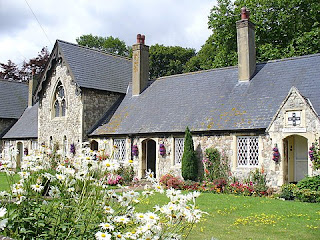Part of the reason was that King Alfred the Great (reigned 871 - 899) wanted important Latin works translated into English to be more accessible to more people. One of those works was a history by Orosius, the Historiarum Adversum Paganos Libri VII, or "Seven Books of History Against the Pagans." Orosius starts with Noah's Flood and tells the story of history up to his own time (he died c.420CE).
His goal was to explain how Christianity improved the lives of humankind, and he gives details such as the dimensions of the Ark:
Adam lived for 930 years. Noah lived 600 years before the Flood and 350 winters after it and he was in the Ark for 40 days, he and his three sons Shem, Ham and Japheth and their three wives. The Ark was 300 fathoms long, 50 fathoms wide, and 30 fathoms high. And his son Shem lived 630 years and his son Arfaxad lived 438 years. Then he begat a son called Heber. From him sprung forth the ‘Hebrew’ people.
Arfaxad was one of the sons of Shem, but the Anglo-Saxons were interested in a different descendant from Noah:
The story of Noah and his sons, and the building of the Ark, seems to have been popular in Anglo-Saxon England. Many of the surviving genealogical lists of Anglo-Saxon kings, for example, feature Noah prominently. The West Saxon Regnal List tell us that the line of the kings of Wessex, the dominant kingdom of Anglo-Saxon England from the late 9th century onwards, was descended from the Old Testament patriarch, through his fourth son Sceaf, said to have been born on the Ark itself. [link]
A list of West Saxon kings declares that they descended from Noah through his fourth [sic] son, Sceaf. The Anglo-Saxon Chronicle for year 855 supports this, at least in two versions (B & C), saying Sceaf was born in the Ark.
Outside of Anglo-Saxon sources, the Noah-Sceaf link is unknown. A reference to him in Snorri Sturluson is explained because the Prose Edda drew on English sources.
Of course, in Beowulf we hear the story of Scyld Scefing, "Shield, son of Scef," who floats ashore as a babe on a ship laden with treasure and becomes king of Denmark. The "genealogy" of the ark-born Sceaf in Orosius and the ship-delivered Scyld Scefing of Beowulf would be a good dissertation topic for someone in my field of study.
We, however, will go in a different direction and look at Paul Orosius and his history.




















